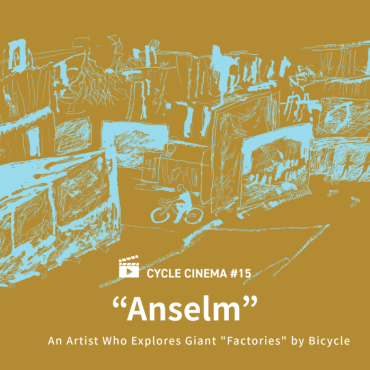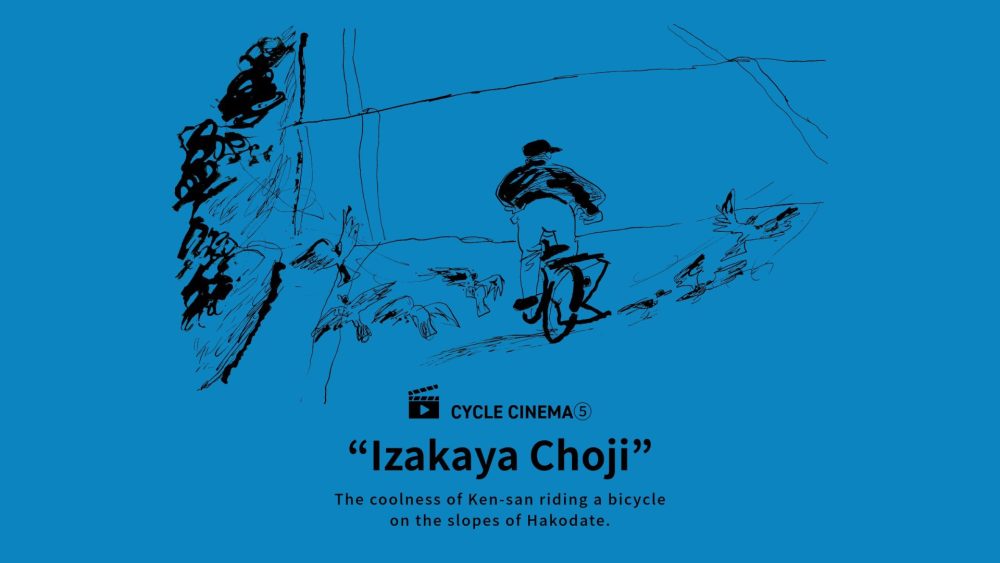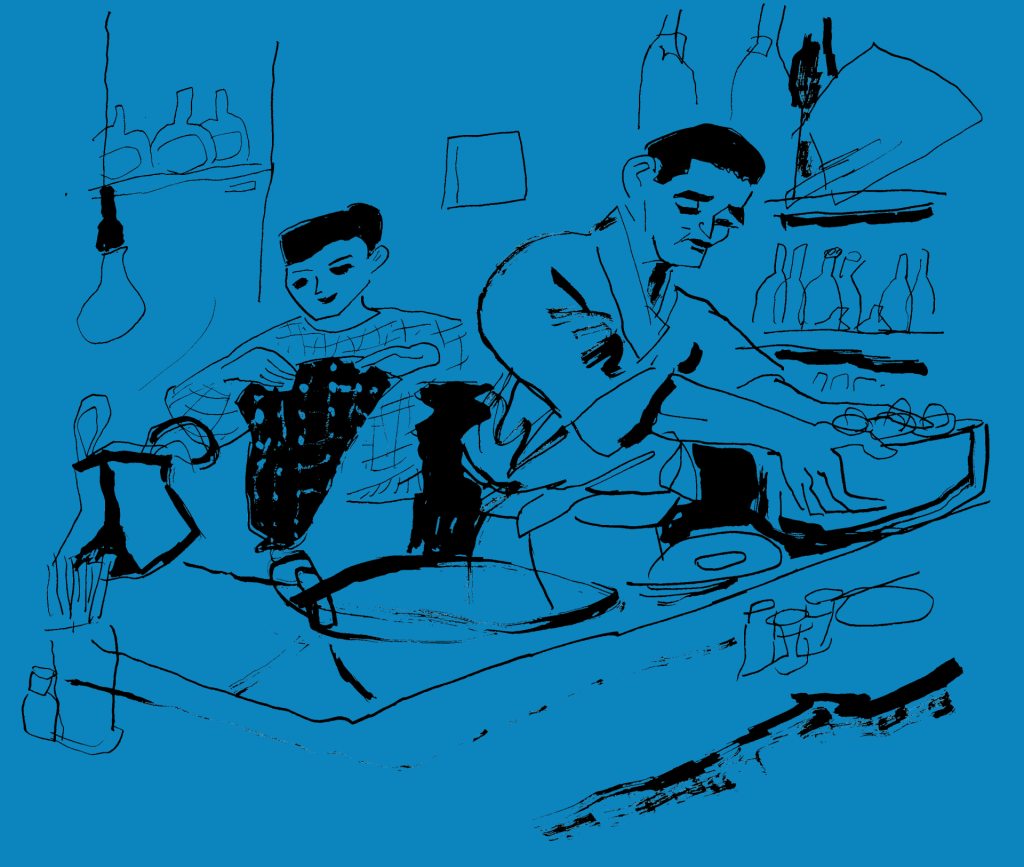
“Anselm”
An Artist Who Explores Giant “Factories” by Bicycle

When I was traveling through Hokkaido by train, there was a peculiar announcement. It warned us to be careful because the name of the next station had changed for a drama shoot. The atmosphere in the train buzzed with excitement. It was a popular drama set in Furano, Hokkaido. The train arrived at the station, but we passed what seemed to be the film crew. Then, in the corner of the platform, I saw a tall man. Even though he had a hat pulled down low, I immediately recognized him as Ken Takakura. Perhaps he had come to visit the filming location of an old friend (Kunie Tanaka). Acknowledging our gaze, Ken-san shyly raised his hand in greeting. It was an overwhelming coolness. Since then, although not from the same generation, I started watching films starring Ken Takakura.
Ken Takakura, who gained popularity in yakuza films, began to change his style around the 1970s. Moving away from the tough yakuza roles, he started portraying sincere, albeit clumsy, individuals. “Izakaya Choji” (1982, directed by Yasuo Furuhata) is a story set in an izakaya (Japanese pub) in Hakodate. Ken Takakura plays the role of the owner, a Motuyaki (grilled Offal) shop with a sorrowful past.
The bicycle makes its appearance at the beginning. In the morning, Ken Takakura leaves the small house by the tracks. His wife, played by Tokiko Kato, sees him off. Ken Takakura rides his bicycle toward the Kanemori Red Brick Warehouse where the shop is located. Hakodate has many slopes. Even the formidable Takakura Ken stands up to pedal. It’s charming, to say the least.
Upon reaching the shop, Ken Takakura stops his bicycle without locking it. He gazes at the shop, takes the mail, and enters through the back door without locking it. He lights the stove, cleans the charcoal, and tidies up the shop. There, it’s neat. As he exits the shop, Tokiko Kato appears on her bicycle. “Perfect timing. I’ll go ahead,” she says, then rides away alone. He quickly catches up, and the two go to the market together.
In these few minutes, the scene featuring the bicycle becomes a means to convey the personality, troubles, and relationships of the protagonist, Eiji Fujino, with his wife and the people around him to the audience. It couldn’t have been done on foot, on a motorcycle, or in a car. It had to be a bicycle. There’s something mysterious about Ken Takakura riding it, making even the bicycle play a handsome role. In “Izakaya Choji,” the bicycle is vividly portrayed as more than just a prop. Watching this movie might make you crave a drink at a familiar izakaya. Of course, after a drink, you’d want to push your bicycle back home. I hope you return singing the theme song, “Jidai Okure no Sakaba (The Izakaya Behind the Times).”

🎬CYCLE CINEMA STORAGE🎬
#01 “The Bicycle Thief”
#02 “Project A”
#03 “Shoot for tomorrow!”(origin title “Butch Cassidy and the Sundance Kid”)
#04 “The Kid With a Bike (Le gamin au vélo)”
#05 “Izakaya Choji”
#06 “Cinema Paradiso”
#07 “Kids Return”
#08 “PERFECT DAYS”
#09 “Kramer vs. Kramer”
#10 “E.T.”
#11 “Gachi-Boshi”
#12 “Yesterday”
#13 “Wadjda”
#14 “The Zone of Interest”
#15 “Anselm”
#16 “Otoko wa Turai yo”
Text_Hideki Inoue
I am from Amagasaki City, Hyogo Prefecture, Japan. I work as a writer and editor. My hobbies include hot baths, skiing, and fishing. Although I have no personal connection, I am independently conducting research on Shiga Prefecture. I prefer an active fishing style called “RUN & GUN,” which involves moving around actively instead of staying in one place. I am planning to purchase a car to transport my bicycle to adopt this style, which might seem a bit counterproductive.
Illusutration_Michiharu Saotome
Post Date:2023.11.17